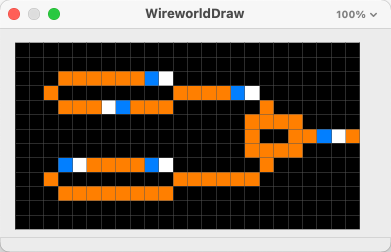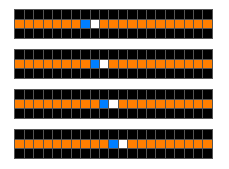Wolfram Language Paclet Repository
Community-contributed installable additions to the Wolfram Language
Wireworld Package | |
0 | an empty cell |
1 | an electron head |
2 | an electron tail |
3 | a wire cell |
test whether expr |
WireworldStateQ |
WireworldStateQ |
|
plot a Wireworld state |
WireworldPlot |
|

draw a Wireworld state with dimensions {d,h} | |
edit a Wireworld state |
WireworldDraw |

WireworldDraw |
|

WireworldDraw |
|
evolve a Wireworld state init t |
WireworldEvolve |
|
|
|
|
|
WireworldPlot |
WireworldEvolve |
|
